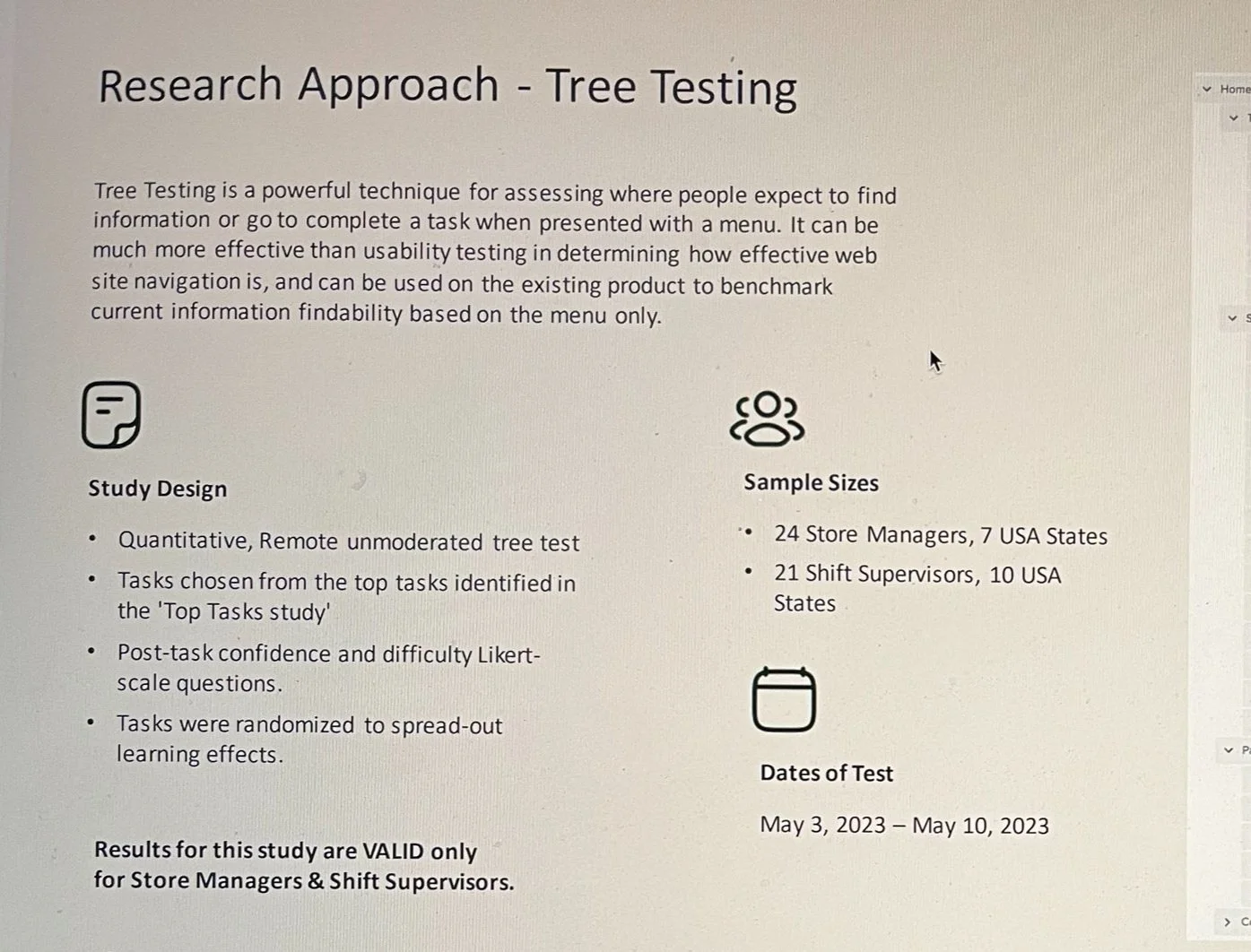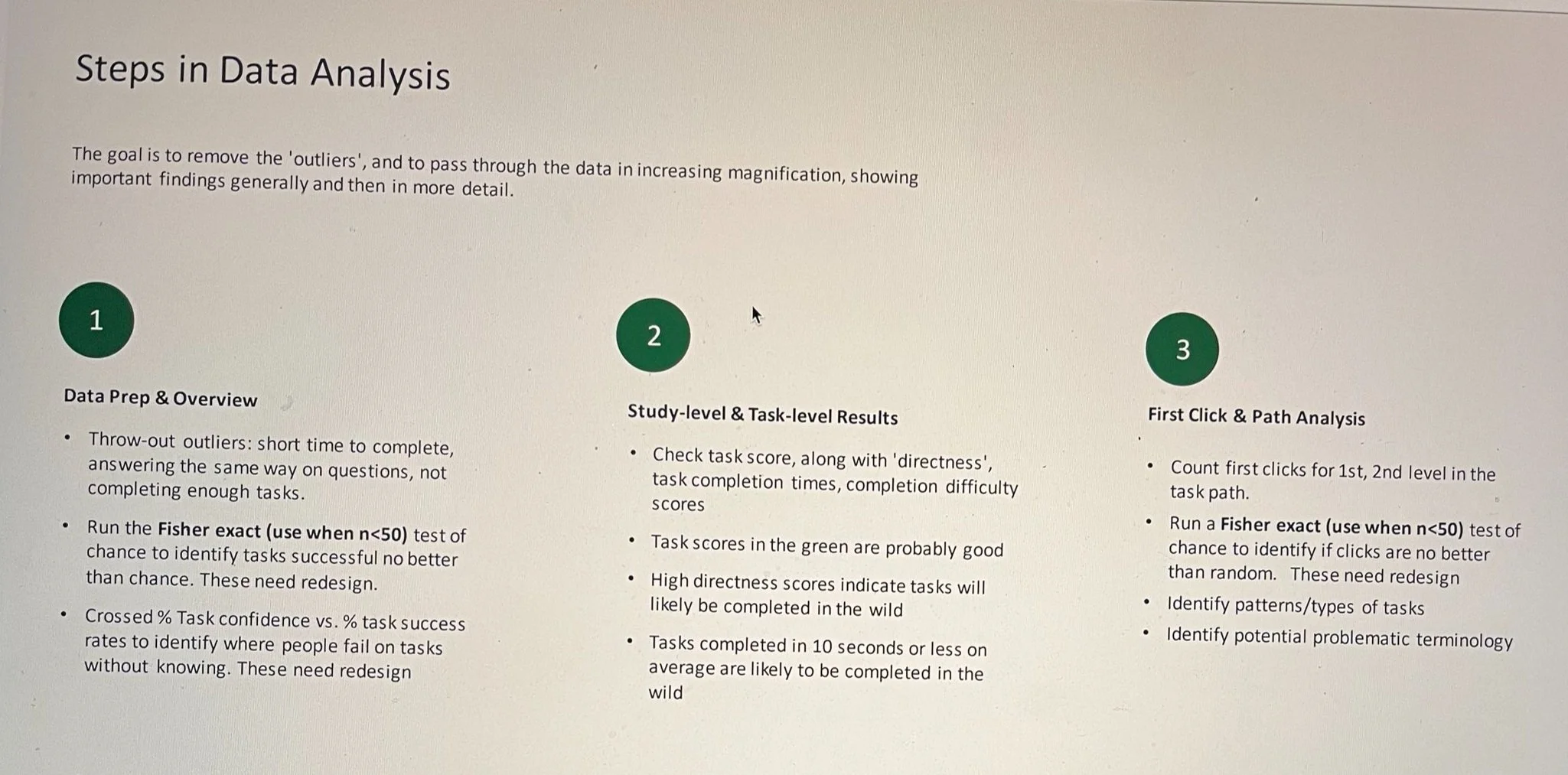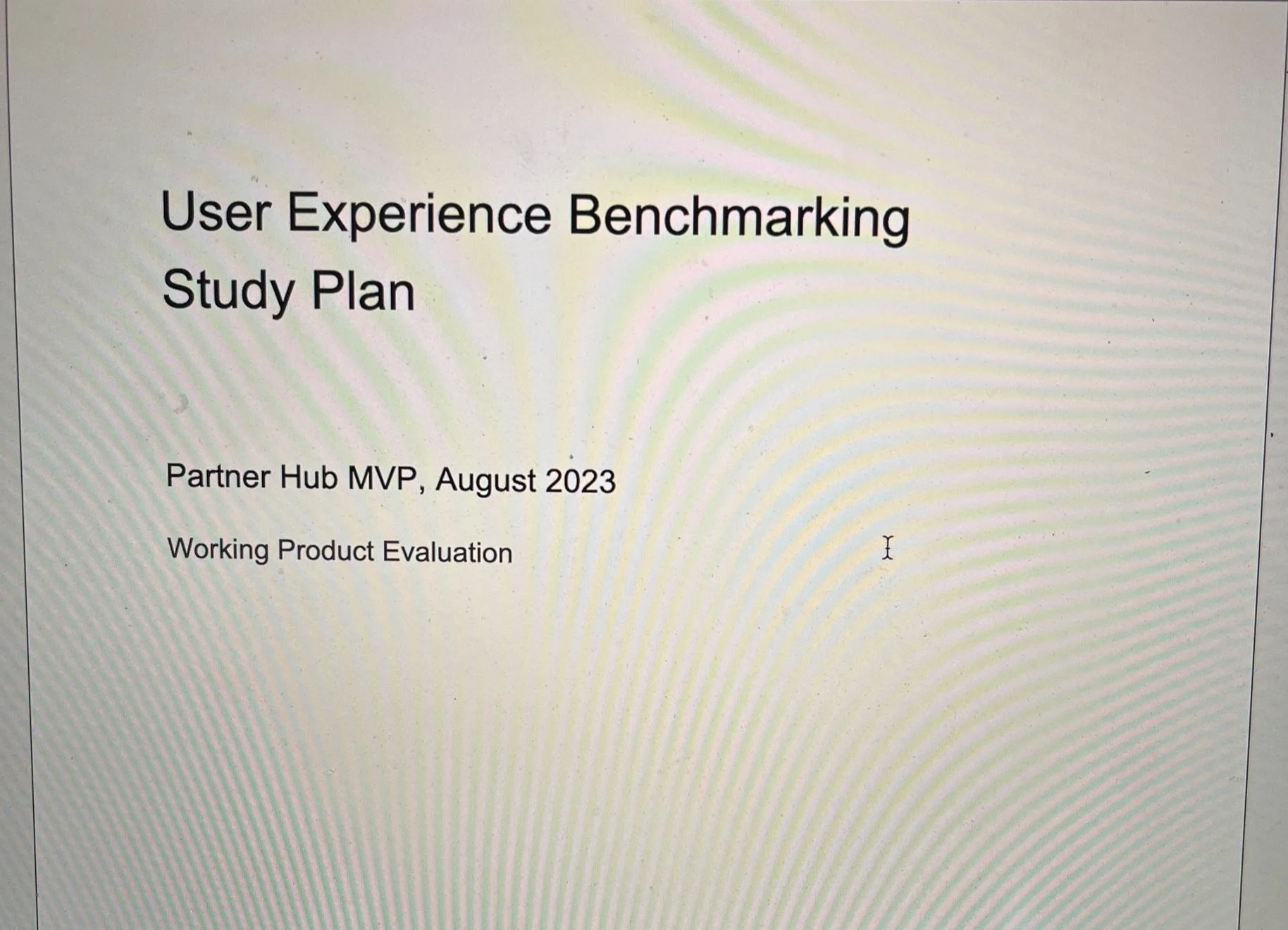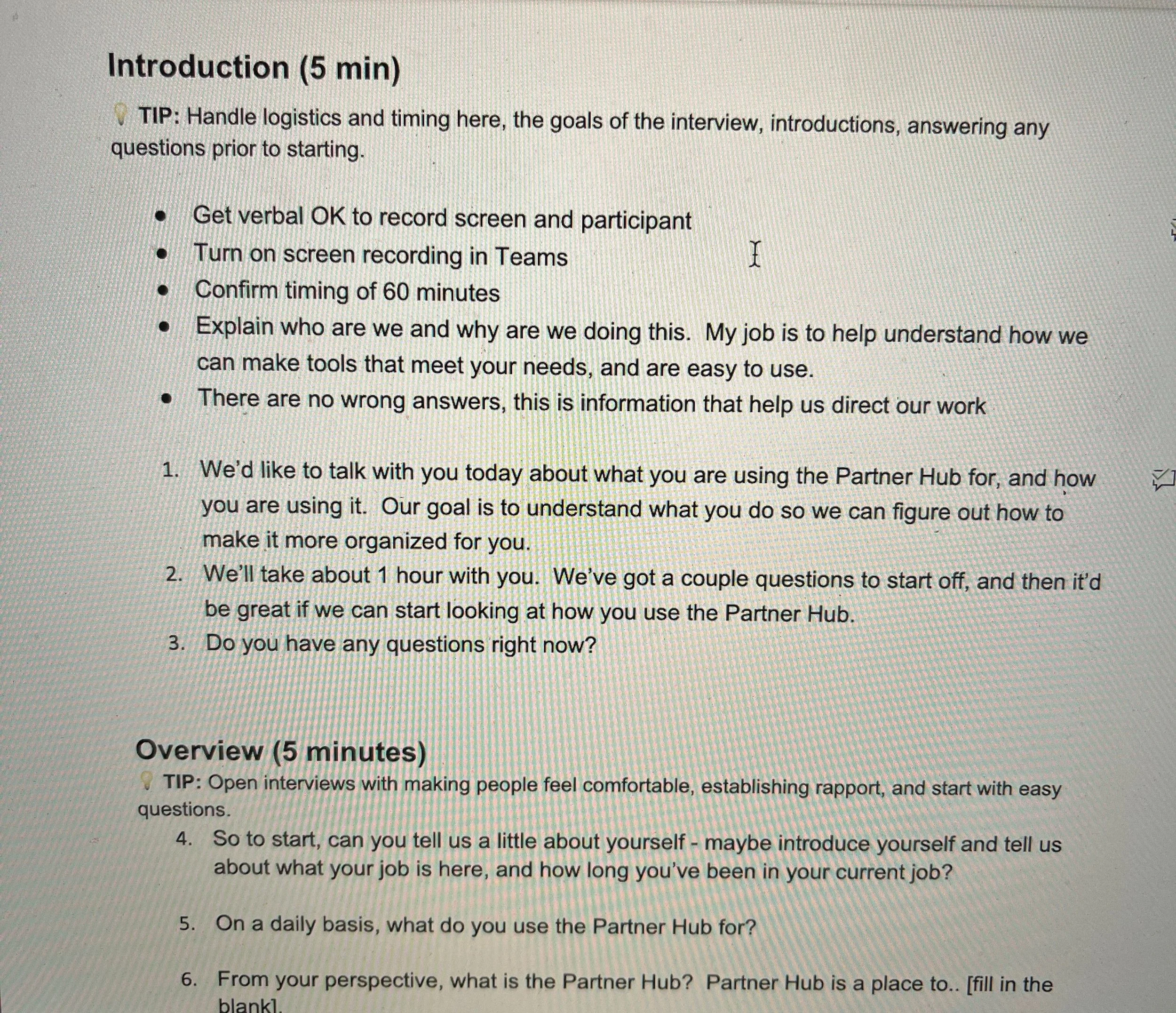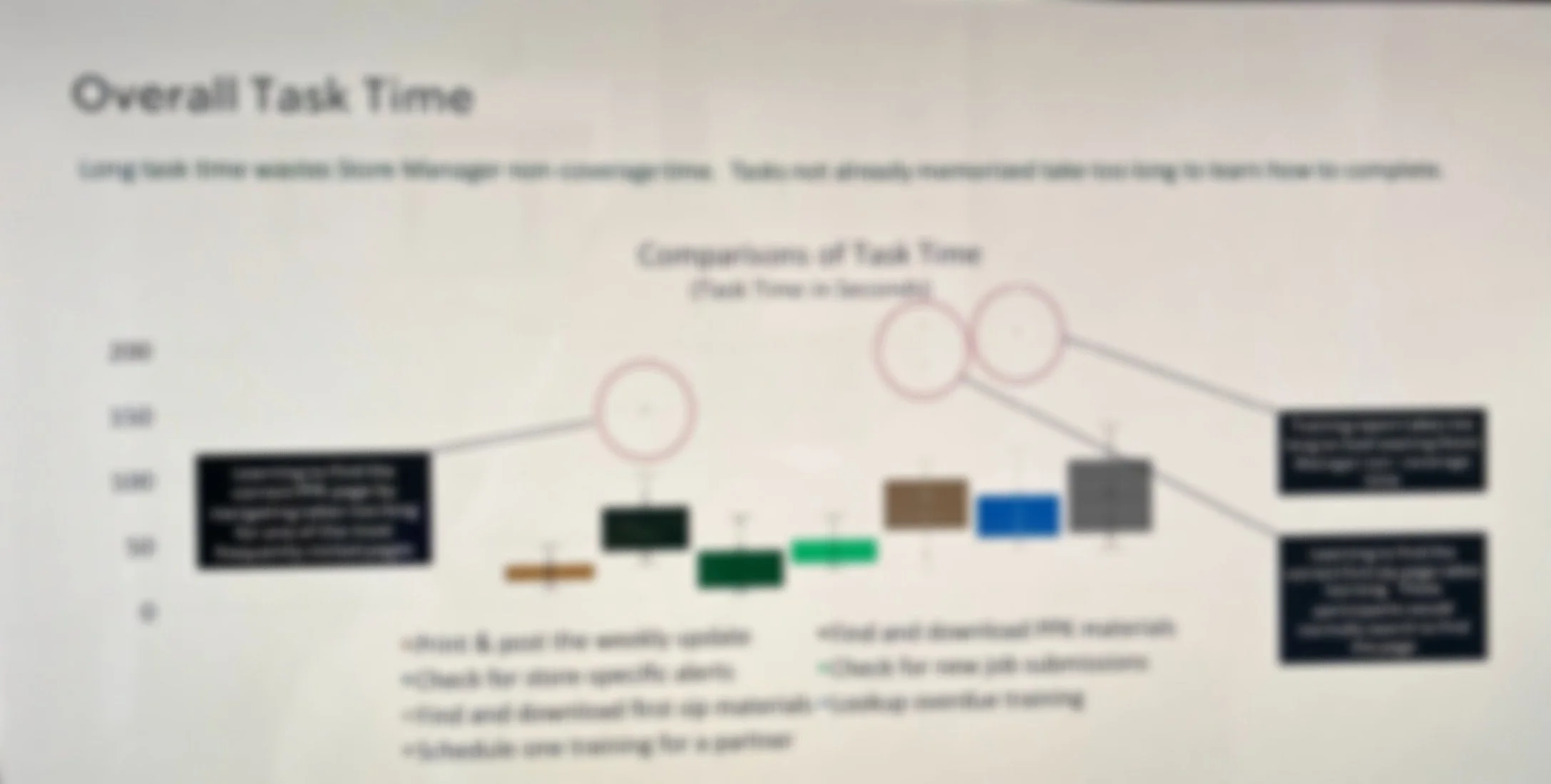I worked with the Starbucks Digitial Partner Design Team to redesign a communication and collaboration product that supports store manager planning, decision-making, and running the store floor.
The Starbucks Digital Design group had a plan to improve the findability of content for store employees (known as partners). After recognizing the difficulty their store partners were having with finding content, I was hired to help them redesign the product information Architecture and homepage to keep the most important pages within reach.
Definition Research
To start my research, I immersed myself in the problem through stakeholder interviews, a prior research audit, a data analytics audit, and a field visit. I quickly found that the existing research found high-level problems, but that more detailed research was needed to identify who was using the product, for which tasks, in what frequency, and what content and tools were more important to each group of partners.
Next, I conducted a Top Tasks Analysis (thank you Jerry McGovern for pioneering this approach) to collect the list of detailed tasks and scenarios needed so I could execute on existing plan. This included 1-1 interviews, an analytics analysis, a search log analysis, a bookmarks analysis, and workplace documents analysis.
I followed up these interviews with SME and store partner workshops to refine this list of tasks and scenarios.
The deliverables during this phase included more refined segment definitions, top tasks listed by segment, usage scenarios for these top tasks, product usage insights and quotes.
Design Evaluations
The primary goal of this next phase was to evalute designs with participant segments identified in the definition phase, using the top tasks and scenarios as stimuli along with the designs. Methods included tree testing, first click testing, concept testing, and usability testing. This phase involved both quantiative UX research, and qualitaitve UX research.
User Experience Benchmarking
The team was interested in comparing the user experience of the redesigned product to the existing product, and quantifying improvements made on the information architecture and navigation. Goals included establishing a baseline for tracking the User Experience, laying a foundation for ongoing performance monitoring, allow the team to set Key Performance Indicators (KPIs), measure specific aspects of product to improve. I was the sole researcher completing all phases on this work, with stakeholder review and input. Thank you Jeff Sauro & MeasuringU.com for your pioneering work.
Strategic User Research
I knew the best user experience strategies are created from qualitative interviews and observations, to synthesize the inner thinking, emotional reactions, and behaviors of people. However I didn’t have access to participants for direct observations, so I combined a usability study with deep 1-1 interviews so I could create an opportunity space and business impacts the team could use in future strategy sessions.
I captured transcripts using MS Teams, corrected the transcripts to match what was spoken, and used a 7-step data synthesis process (thank you Indi Young for creating this process, and so much more) to turn quotes into summaries, an opportunity space, and a business impact map (thank you Debbie Levitt for pioneering this). This data synthesis preserves what people say without introducing our own bias, allowing for individual differences to emerge, which is what we want. Out of this synthesis emerged several user archetypes, with differences in how they approach their work, different guiding principles, and work approaches.
The deliverables served the differing needs of product management and design.
Year
2023
Brief
Make it easier to be a store partner by keeping them in the flow while looking for and using their most important content & tools.
Solution
Redesign the collaboration product Information Architecture and homepage to keep the most important pages within reach.
Keywords
quantitative UX research, analytics data analysis, UX benchmarking, survey research, statistical analysis, tree testing, top task analysis, qualitative UX research, discovery UX research, usability testing, concept testing, remote 1-1 interviews, qualitative data transcribing, data synthesis, agile
Tools
Qualtrics, Optimal Workshop, MIRO, MS Teams, MS Excel, MS PowerPoint, JIRA, Confluence, FigJam, Figma
Deliverables, toolkits, templates
UX Benchmarking toolkit, UX research planning templates, presentation templates, opportunity space tables, business impact maps, user archetypes, research findings + insights + recommendations
Deliverables this phase
Tree testing results, first click testing results, concept testing results + recommendations + summaries of emotional reaction & inner thinking, and usability testing results.
Deliverables this phase
UX Benchmarking toolkit, raw data, statistical analysis calculator, SUS statistical analysis, videos cut into task chapters, data analysis, findings, recommendations, UX Benchmarking presentation template
Deliverables this phase
Opportunity space tables, business impact maps, user archetypes, research findings + insights + recommendations
Starbucks Communication & Collaboration Product


